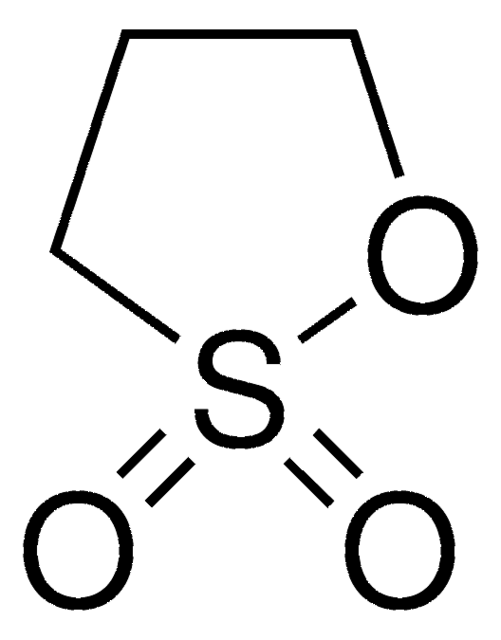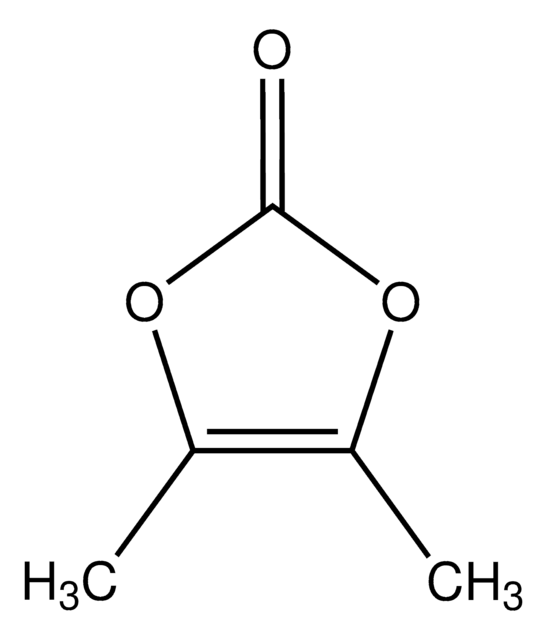809977
Vinylene carbonate
battery grade, 99.5%, acid <200 ppm, H2O <100 ppm
Synonym(s):
1,3-Dioxol-2-one, VC
About This Item
Recommended Products
grade
battery grade
Quality Level
description
Moisture: <10 ppm
Acid content: <10 ppm
Assay
99.5%
form
liquid
impurities
≤100 ppm H2O
≤200 ppm acid
refractive index
n20/D 1.421 (lit.)
bp
162 °C (lit.)
mp
19-22 °C (lit.)
density
1.355 g/mL at 25 °C (lit.)
application(s)
battery manufacturing
SMILES string
O=C1OC=CO1
InChI
1S/C3H2O3/c4-3-5-1-2-6-3/h1-2H
InChI key
VAYTZRYEBVHVLE-UHFFFAOYSA-N
Looking for similar products? Visit Product Comparison Guide
Related Categories
General description
Application
Features and Benefits
✔ Improves Anode Performance
✔ Forms Stable SEI
✔ Increases Cycle Life
Other Notes
These additives have low water content (less than 100 ppm). Please handle under inert and moisture free environment (glove box). Keep containers tightly closed. Keep away from heat and ignition sources. Store in a cool and dry place. Avoid storing together with oxidizers.
Legal Information
related product
Signal Word
Danger
Hazard Statements
Precautionary Statements
Hazard Classifications
Acute Tox. 3 Dermal - Acute Tox. 4 Oral - Aquatic Chronic 2 - Eye Dam. 1 - Skin Irrit. 2 - Skin Sens. 1 - STOT RE 2 Oral
Target Organs
Liver,Stomach
Storage Class Code
6.1C - Combustible acute toxic Cat.3 / toxic compounds or compounds which causing chronic effects
WGK
WGK 3
Flash Point(F)
176.0 °F - closed cup
Flash Point(C)
80 °C - closed cup
Certificates of Analysis (COA)
Search for Certificates of Analysis (COA) by entering the products Lot/Batch Number. Lot and Batch Numbers can be found on a product’s label following the words ‘Lot’ or ‘Batch’.
Already Own This Product?
Find documentation for the products that you have recently purchased in the Document Library.
Customers Also Viewed
Articles
Experts discuss challenges and production processes of nickel-rich layered oxide cathode materials in energy storage systems.
Due to the adverse impact of the continued use of fossil fuels on the earth’s environment and climate, researchers have been asked to develop new approaches for producing power using renewable sources like wind and solar energy
Ionic liquid electrolytes explored for rechargeable batteries' advancement; future IL development discussed.
Our team of scientists has experience in all areas of research including Life Science, Material Science, Chemical Synthesis, Chromatography, Analytical and many others.
Contact Technical Service
















